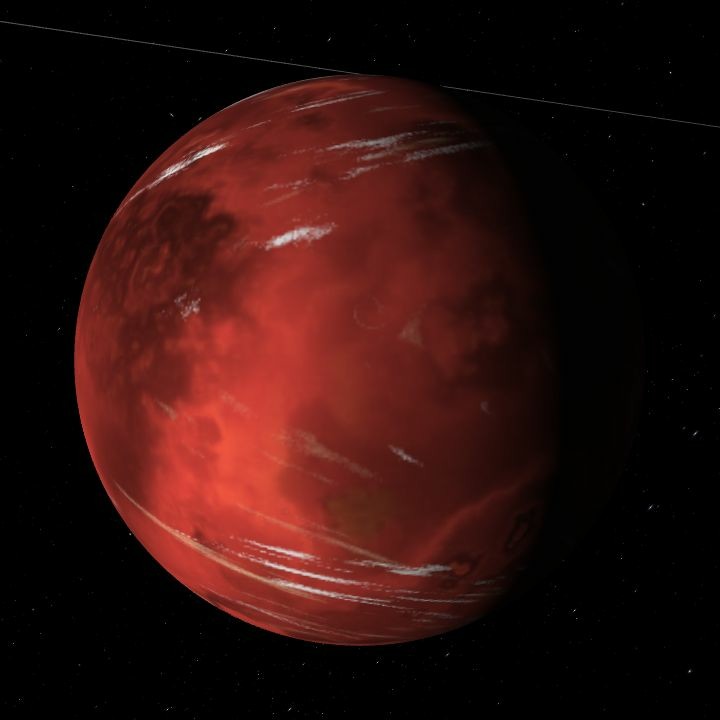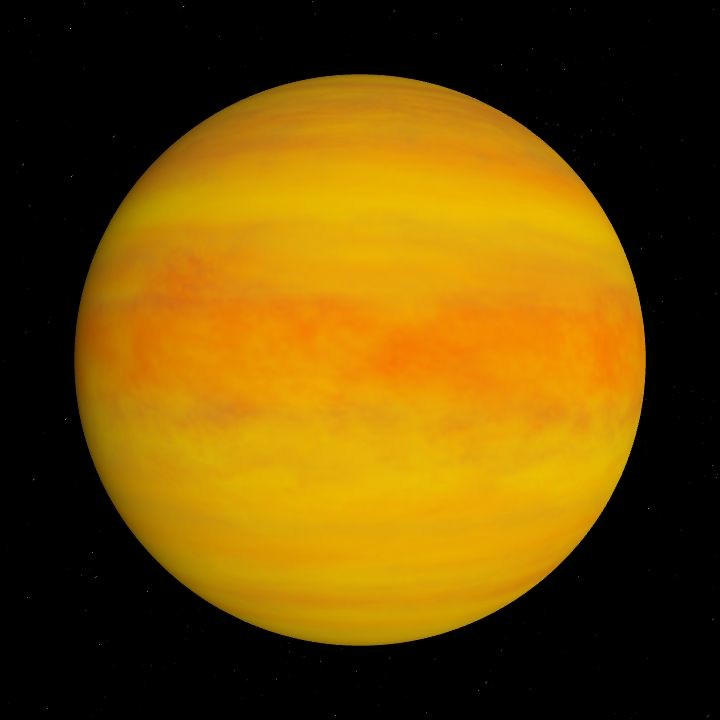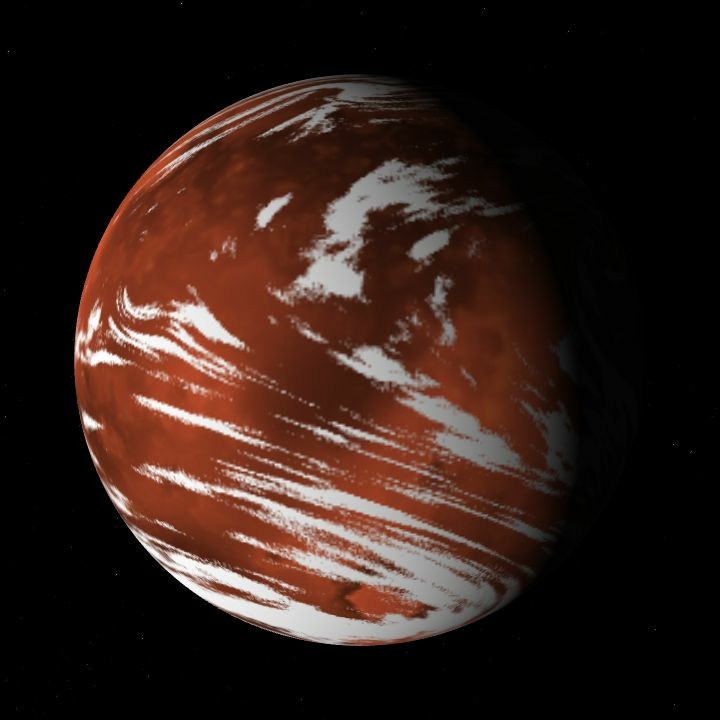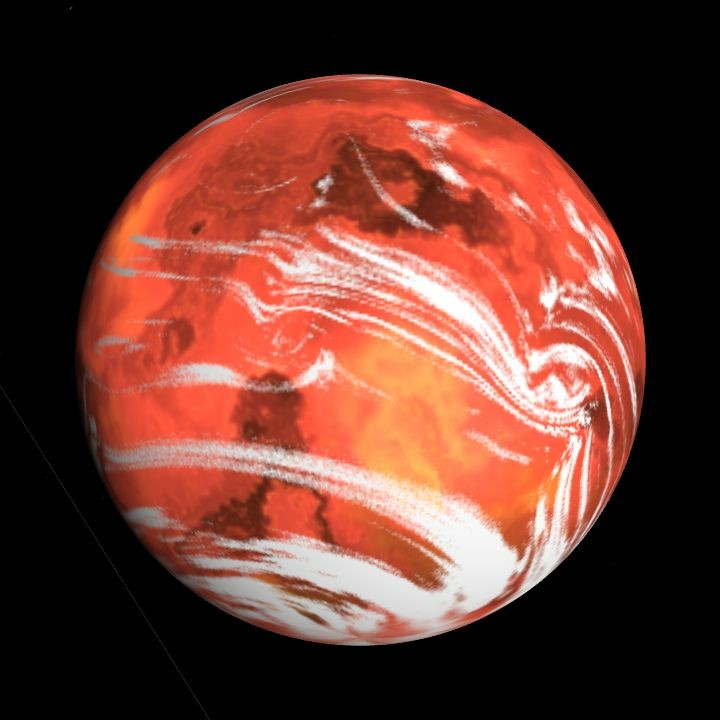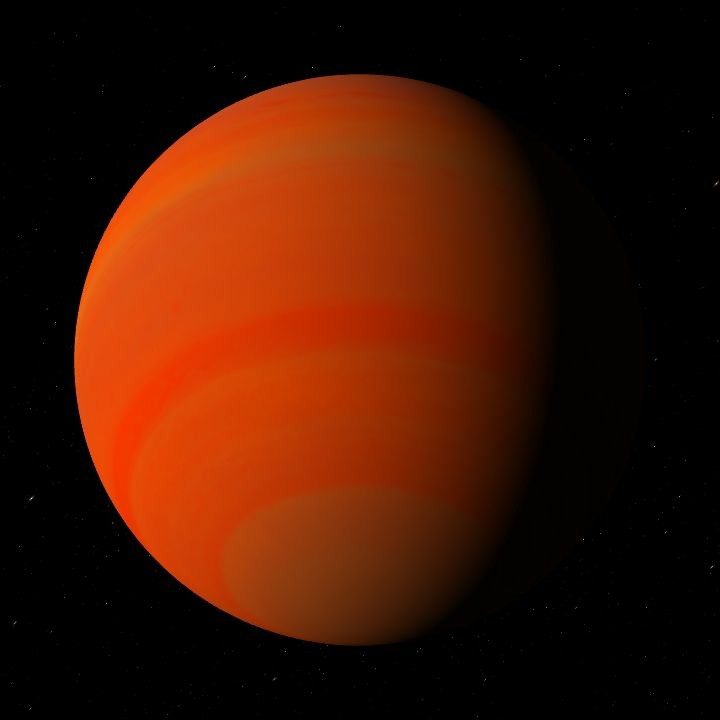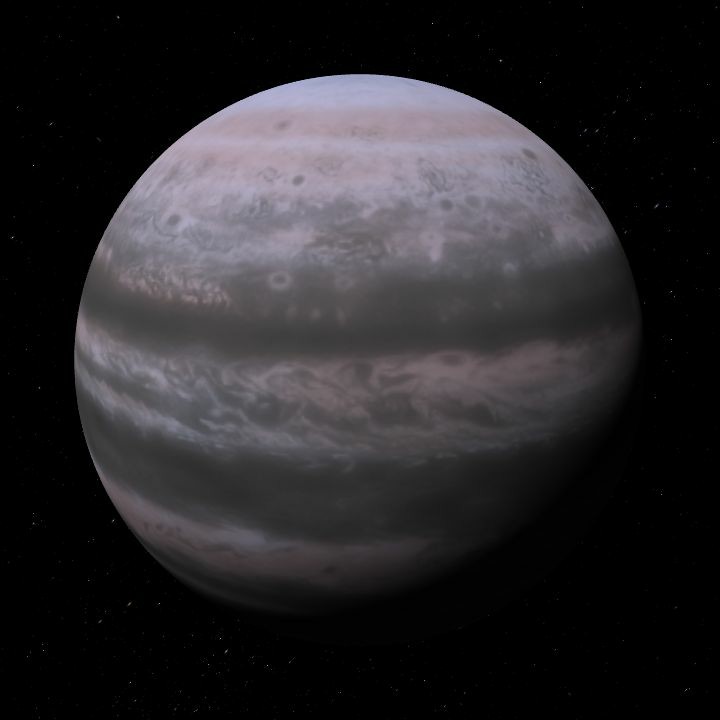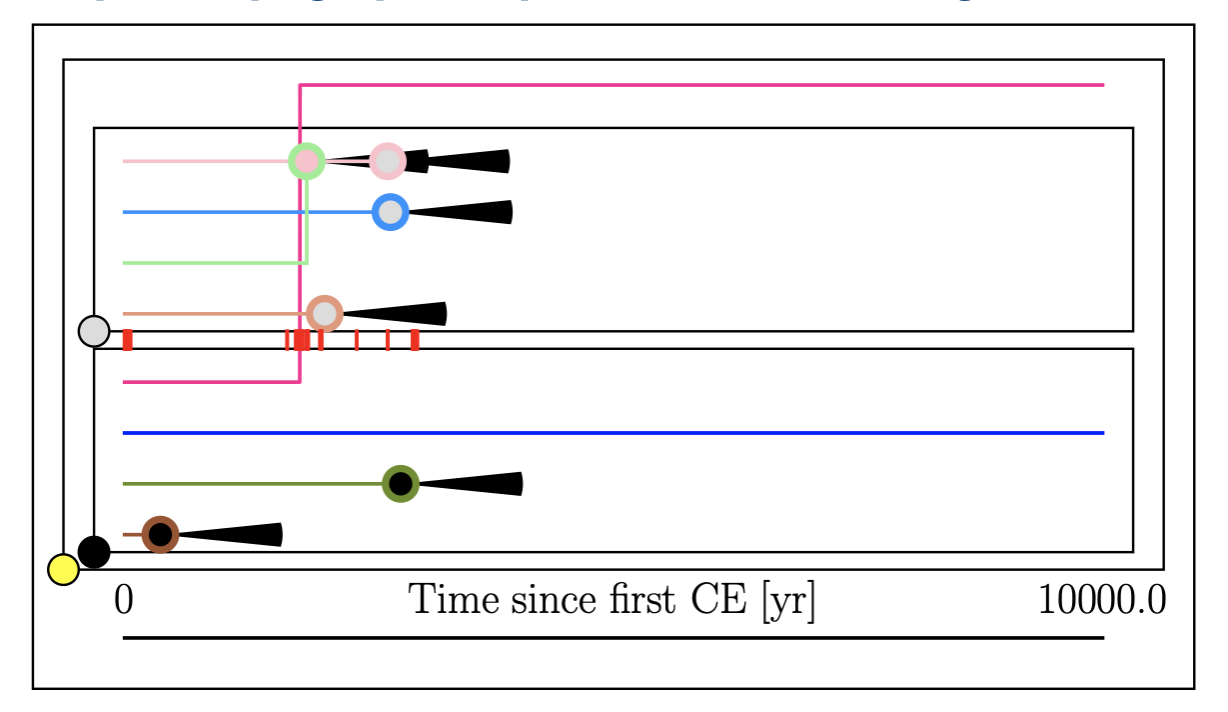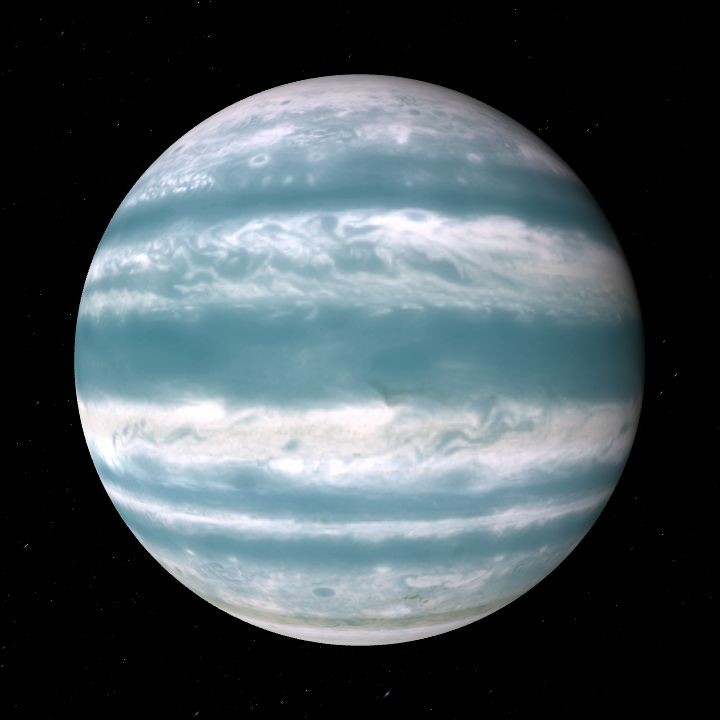Name: HD 63433 b
A potentially rocky world, larger than Earth.
Distance from Earth: 73 light-years
Year discovered: 2020
Discovered by: Transiting Exoplanet Survey Satellite (TESS)
Planet radius: 2.15 x Earth
Orbital period: 7.11 day(s)
Recent searches
Search options
#exoplanets
Uranus’ Moons Could Have Cryovolcanism from Potential Interior Oceans https://www.universetoday.com/articles/uranus-moons-could-have-cryovolcanism-from-potential-interior-oceans
Name: Kepler-107 e
A potentially rocky world, larger than Earth.
Distance from Earth: 1,716 light-years
Year discovered: 2014
Discovered by: Kepler
Planet radius: 2.903 x Earth
Planet mass: 14 Earths
Orbital period: 14.75 day(s)
Equilibrium temperature: 955° K
Name: Kepler-1205 b
A potentially rocky world, larger than Earth.
Distance from Earth: 2,278 light-years
Year discovered: 2016
Discovered by: Kepler
Planet radius: 1.41 x Earth
Orbital period: 1.08 day(s)
Name: TOI-628 b
A giant planet composed mainly of gas.
Distance from Earth: 583 light-years
Year discovered: 2021
Discovered by: Transiting Exoplanet Survey Satellite (TESS)
Planet radius: 11.882 x Earth
Planet mass: 2,012 Earths
Orbital period: 3.41 day(s)
Equilibrium temperature: 1586° K
Name: Kepler-1891 b
A potentially rocky world, larger than Earth.
Distance from Earth: 1,945 light-years
Year discovered: 2021
Discovered by: Kepler
Planet radius: 1.521 x Earth
Orbital period: 4.02 day(s)
Name: Kepler-36 b
A super-Earth with a super-close neighbor.
Distance from Earth: 1,722 light-years
Year discovered: 2012
Discovered by: Kepler
Planet radius: 1.498 x Earth
Planet mass: 4 Earths
Orbital period: 13.87 day(s)
Name: Kepler-324 e
A potentially rocky world, larger than Earth.
Distance from Earth: 1,636 light-years
Year discovered: 2021
Discovered by: Kepler
Planet radius: 2.039 x Earth
Orbital period: 13.98 day(s)
In the heat of battle that was submitting my PhD thesis, I completely forgot to share this with you!
@nature invited us to contribute a Research Briefing on our latest #exoplanets paper
Hope you enjoy it
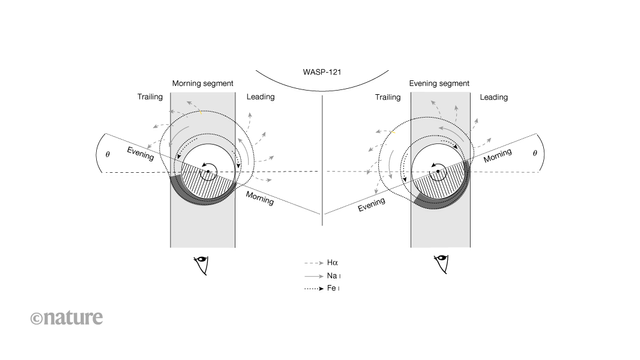
Name: TOI-1268 b
A giant planet composed mainly of gas.
Distance from Earth: 357 light-years
Year discovered: 2022
Discovered by: Transiting Exoplanet Survey Satellite (TESS)
Planet radius: 9.1 x Earth
Planet mass: 96 Earths
Orbital period: 8.16 day(s)
Equilibrium temperature: 919° K
Name: HD 154088 b
A Neptune-like giant planet.
Distance from Earth: 60 light-years
Year discovered: 2021
Discovered by: La Silla Observatory
Planet mass: 7 Earths
Orbital period: 18.56 day(s)
「 The achievement was made possible by Webb’s coronagraphs, which block light from bright stars as happens in a solar eclipse to reveal otherwise hidden worlds. This allowed the team to look for infrared light in wavelengths that reveal specific gases and other atmospheric details 」
I’m in Belfast this week, giving an Astrophysics Research Centre Seminar at #QUB on Wednesday 26th March titled “Scattered: Wide separation directly imaged exoplanets and shattered exomoons” (also soliciting pub recommendations!) #astrodon #exoplanets
For decades, scientists have debated how small #exoplanets form.
New model suggests that #planets form in narrow rings at specific locations in the #protoplanetary disk, making #planet formation more organized than previously believed.
Simulations also imply that up to about 1% of super-Earth and mini-Neptune systems could host Earth-like planets within the #habitable zone.
This implies an occurrence rate of approximately one Earth-like planet per 300 sun-like stars.

Name: K2-77 b
A Neptune-like giant planet.
Distance from Earth: 462 light-years
Year discovered: 2016
Discovered by: K2
Planet radius: 2.3 x Earth
Planet mass: 604 Earths
Orbital period: 8.20 day(s)
Extremely Large Telescope should be able to gather spectra not just on #exoplanets that transit their #star, but also from non-transiting exoplanets via reflected starlight.
It should be possible to make clear and accurate distinctions for nearby star systems.
For the closest star, #Proxima Centauri, we could detect #life on an Earth-like world Proxima b with only 10 hours of observations.
#astronomy #astrobiology
https://phys.org/news/2025-03-extremely-large-telescope-hints-life.html
14-Mar-2025
TOI-1453 c: a key sub-Neptune in a system of two #exoplanets
Discovery a super-Earth and a sub-Neptune 250 light years away from our solar system
https://www.eurekalert.org/news-releases/1076975 #science #astrobiology
We just found carbon dioxide on distant exoplanets! Webb’s discovery could rewrite how we search for life.
#Exoplanets #WebbTelescope #SpaceDiscovery
https://geekoo.news/webb-telescope-unveils-carbon-clues-on-distant-alien-worlds/
Exoplanet 'baby pictures' reveal exomoons possibly taking shape around infant worlds https://www.space.com/the-universe/exoplanets/exoplanet-baby-pictures-reveal-exomoons-possibly-taking-shape-around-infant-worlds

